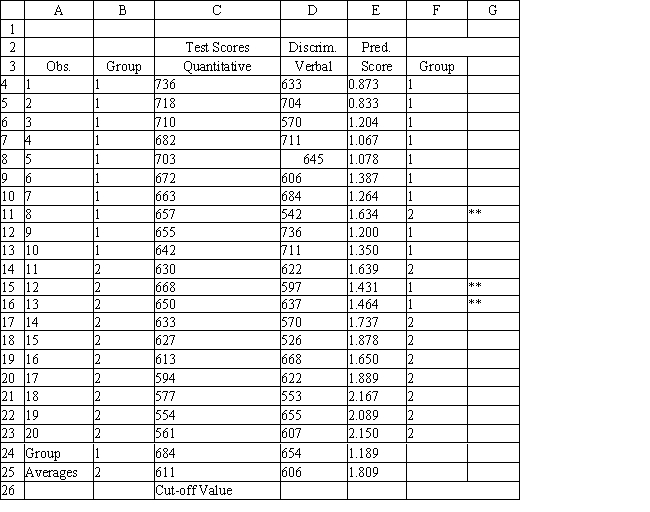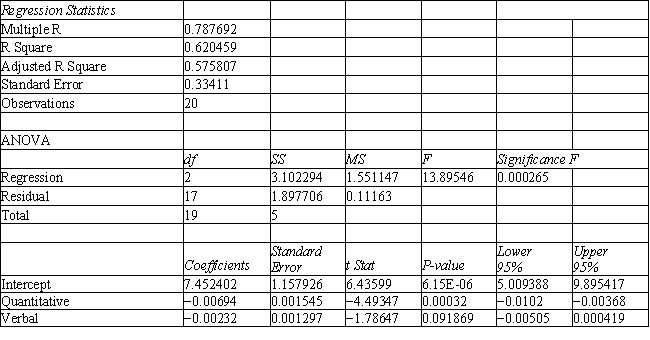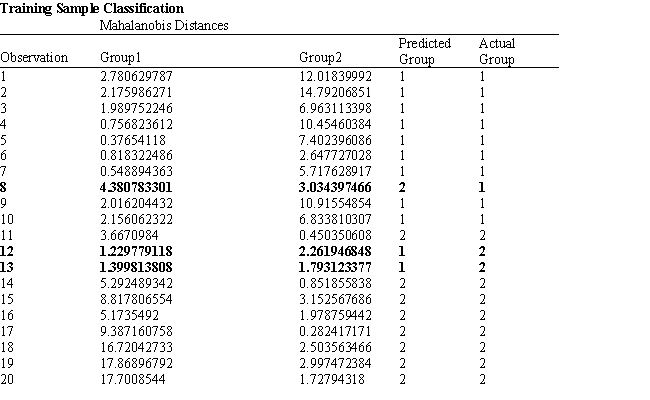Exhibit 10.1
The following questions are based on the problem description and the output below.
A college admissions officer wants to evaluate graduate school applicants based on their GMAT scores, verbal and quantitative. Students are classified as either successful or not-successful in their graduate studies. The officer has data on 20 current students, ten of whom are doing very well (Group 1) and ten who are not (Group 2) . 




-Refer to Exhibit 10.1. The straight line distance between two points (X1, Y1) and (X2, Y2) is calculated as
Definitions:
Articles
Written compositions in prose, usually nonfiction, on a specific topic, forming an independent part of a book or other publication.
Dissonance
A psychological conflict resulting from incongruous beliefs and attitudes held simultaneously.
Cognitions
The mental action or process of acquiring knowledge and understanding through thought, experience, and the senses.
Incongruent
Referring to situations or elements that are not consistent or in harmony with each other.
Q11: The R<sup>2</sup> statistic (also referred to
Q14: If no other feasible solution to a
Q38: Under maximin rule a decision maker hedges
Q53: Refer to Exhibit 9.2. Predict the mean
Q57: A practical way of dealing with the
Q59: In a model: Y<sub>i</sub> =
Q68: Refer to Exhibit 14.4. What formula should
Q71: For an activity with duration t, slack
Q75: A company must invest in project 1
Q76: Using the information in Exhibit 12.3, what